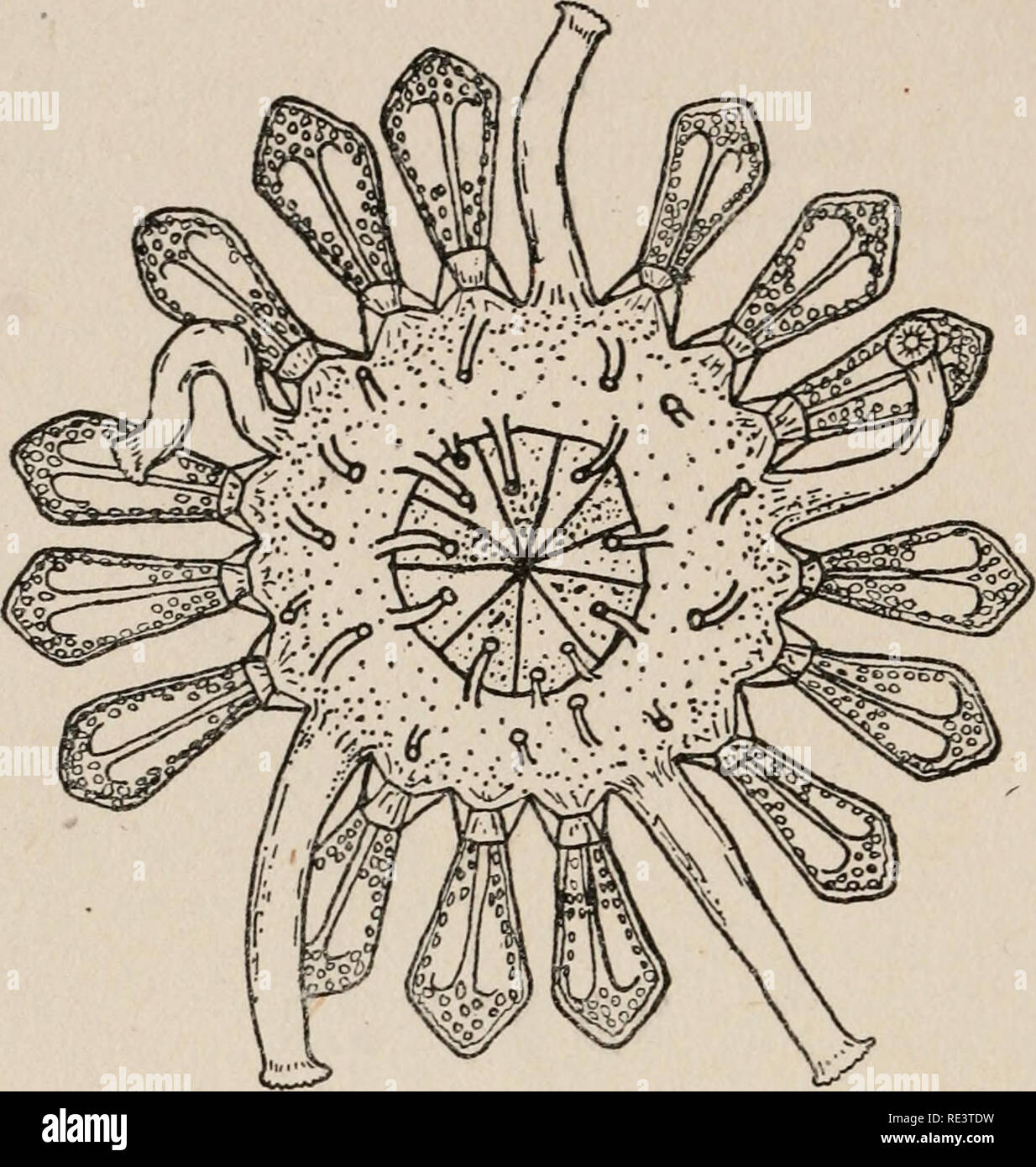. Echinoderms of Connecticut. Echinodermata -- Connecticut. IO4 CONNECTICUT GEOL. AND NAT. HIST. SURVEY. [Bull. by its further growth, and the development of plates and spines, it is able to assume the habits of the adult.. FIG. 18. Arbacia punctulata. Oral surface of young urchin shortly after the metamorphosis. (After Brooks.) The clypeastroids pass through stages very similar to those of the regular sea-urchins. The sand-dollar, for example, de- velops from a long-armed pluteus, which settles to the sand at the sea bottom and gives rise to the young sand-dollar. This has at first a few rela

Image details
Contributor:
The Book Worm / Alamy Stock PhotoImage ID:
RE3TDWFile size:
7.1 MB (382.6 KB Compressed download)Releases:
Model - no | Property - noDo I need a release?Dimensions:
1540 x 1622 px | 26.1 x 27.5 cm | 10.3 x 10.8 inches | 150dpiMore information:
This image is a public domain image, which means either that copyright has expired in the image or the copyright holder has waived their copyright. Alamy charges you a fee for access to the high resolution copy of the image.
This image could have imperfections as it’s either historical or reportage.
. Echinoderms of Connecticut. Echinodermata -- Connecticut. IO4 CONNECTICUT GEOL. AND NAT. HIST. SURVEY. [Bull. by its further growth, and the development of plates and spines, it is able to assume the habits of the adult.. FIG. 18. Arbacia punctulata. Oral surface of young urchin shortly after the metamorphosis. (After Brooks.) The clypeastroids pass through stages very similar to those of the regular sea-urchins. The sand-dollar, for example, de- velops from a long-armed pluteus, which settles to the sand at the sea bottom and gives rise to the young sand-dollar. This has at first a few relatively long spines and large tube-feet. There is now a nearly complete radial symmetry, the intestinal opening at this stage being near the center of the upper surface, -some- what as in the regular urchins. With the further growth of the animal, its bilateral symmetry becomes more marked, and the anus is gradually shifted to its final position near or beneath the edge of the disk. Grave* has been successful in rearing large numbers of the key-hole urchin from the fertilized eggs, and following their transformations to the adult form. The egg of this species * C. Grave. Biol. Bulletin, vol. v, 1903.. Please note that these images are extracted from scanned page images that may have been digitally enhanced for readability - coloration and appearance of these illustrations may not perfectly resemble the original work.. Coe, Wesley Roswell, 1869-1960. Hartford, Printed for the State geological and natural history survey